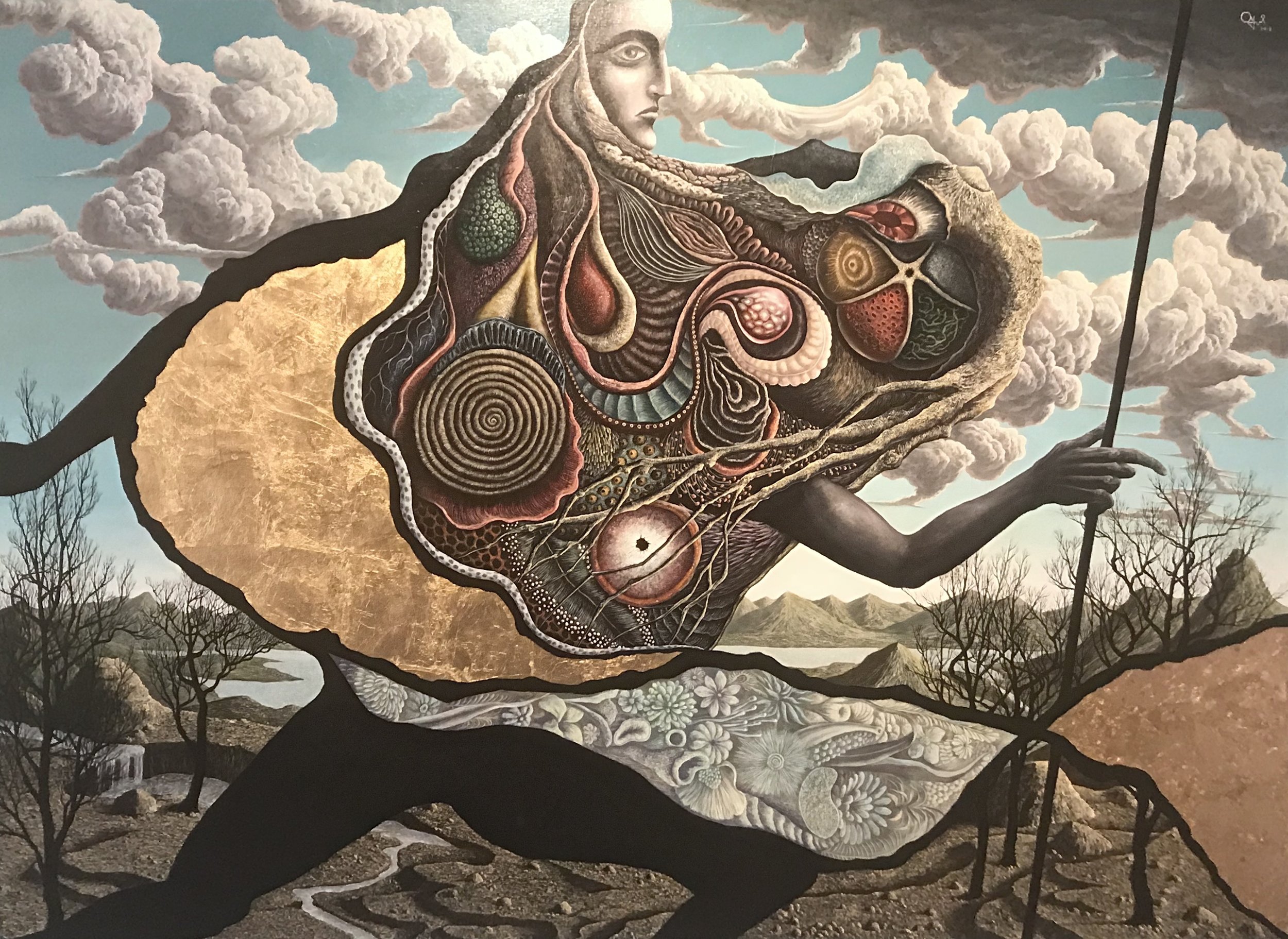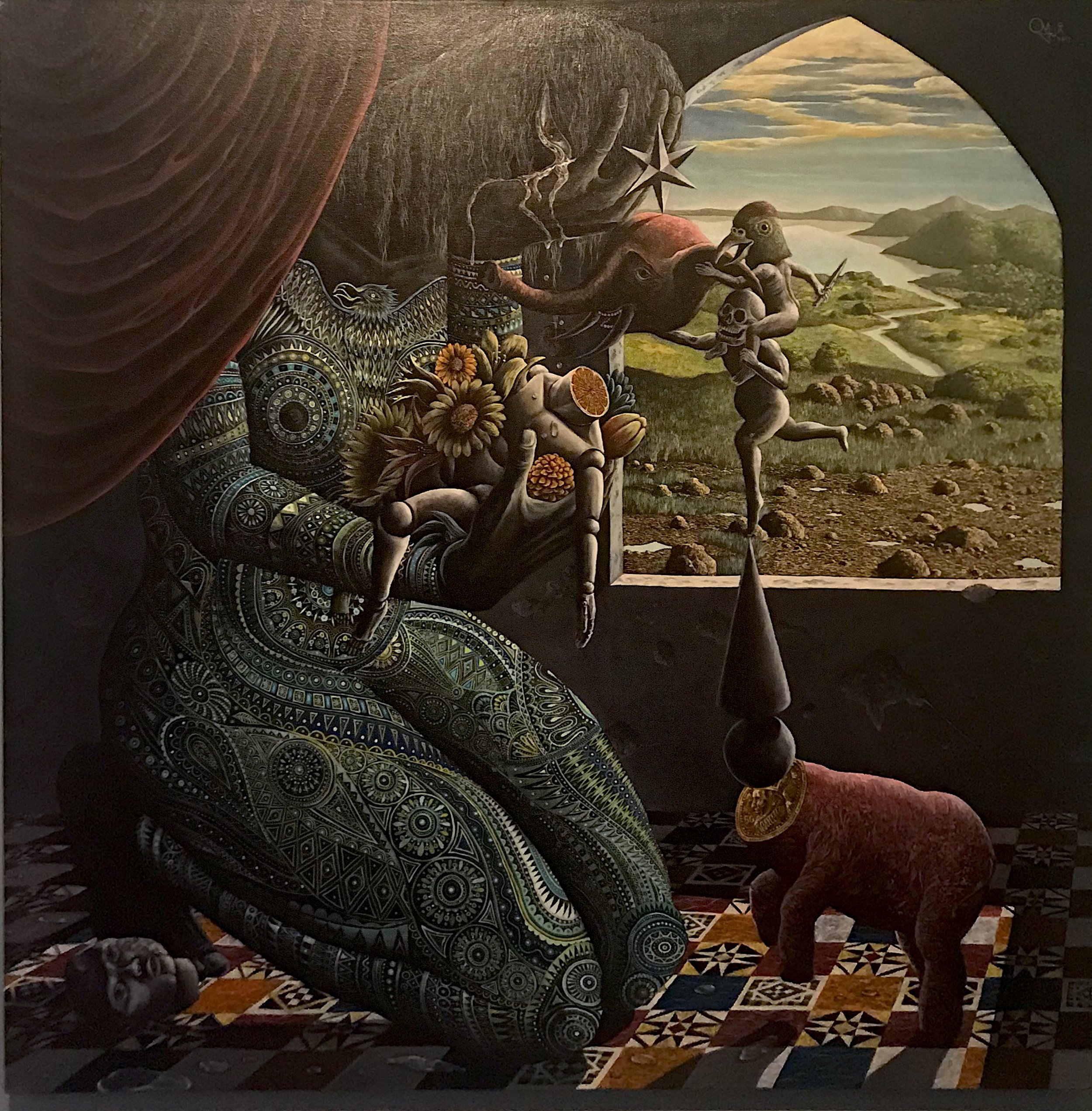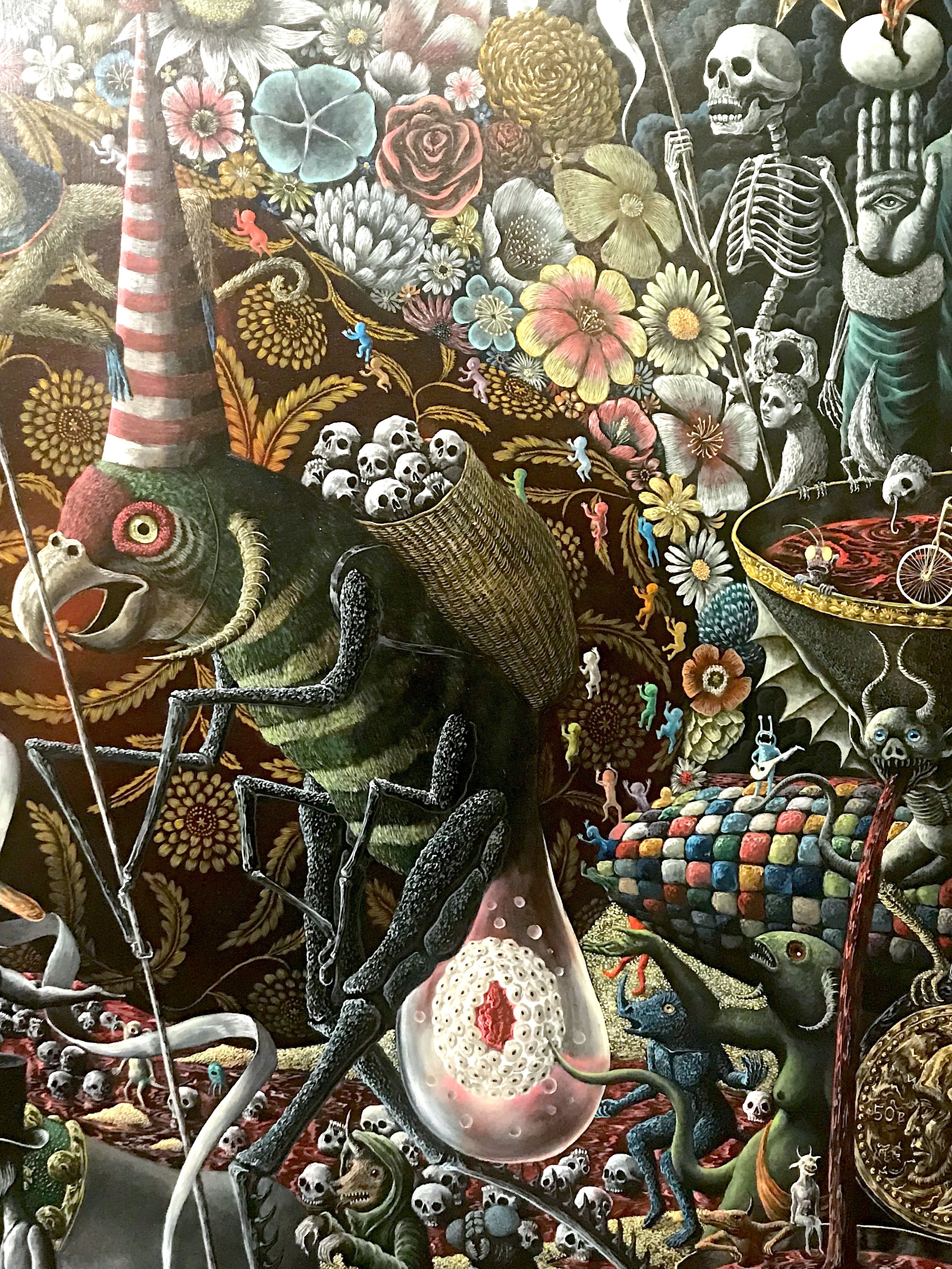Yui Sakamoto
Click on the photo to see more
In an era where everything has gone global, we should not be surprised that a gifted young Japanese artist creates pulsatingly surreal visions of gloom and doom married to a sensuous Mexican iconography. But like the Mexican day of the dead festivities, the doom becomes more excitingly glorious bacchanal with dancing devils making gloom appear very attractive indeed.
Yui arrives in Monterrey, Nuevo Leon when barely a teenager; his father has been licensed to teach Japanese in a Monterrey school. After a few short years, the family returns to Japan leaving Yui in Mexico to study art. It is not long before he is teaching in an important art school in Aguascalientes. The decision has been made; he is magically captured by Mexico, it’s culture, it’s traditions and is settling in San Miguel de Allende to continue in his quest of paying pictorial homage to a land which is pure magic to him.
At the same time, the young artists studies and admires the entire world of the 20th century surrealist movement with a particular preference to Salvador Dáli; it is not surprising to find some vague and/or feint reference to Dáli in all his paintings. Using the precision and meticulousness of methods of Japanese painting, the artist successfully creates exquisite painting techniques with the exciting vision of Mexican folk art traditions; the legends of the skull figures dancing off the picture plane, the Katrinas, the iguanas and the jaguars, the tropical fruits, all juxtaposed to tell stories of love and marriage, of death and the after world, of the flora and fauna of the land, almost a pictorial serenade to Gea, the earth goddess.
Many present-day customs are also sneaked into the pictures such as the falling God, a bronze hued youth with the native Indian codes and images tattooed on to his body, the Dali-like shattered egg in place of his head, or the mother/goddess figure in the pale moon light floating in a yoga like position; east meets west. In one large painting we see a meal being consumed by an alligator and a native turkey (a sophisticated reference to the native bird of the Americas, now so ubiquitous in the entire world) on a day-of-the-dead altar with libation also being enjoyed by a turtle (also native to Mexico) and a Cholosquincles (hairless) dog, the native dog beloved by the early Aztec civilization and whose terracotta presence is to be found in many Mexican museums); far in the background, a jolly death is serenading the group while a less joyful one sits in the center of the table, waiting to be served…
This is most definitely not your usual folk art painting still being produced in many of the Mexican provinces. But then, how could it be? Here is a highly skilled and sophisticated artist paying homage to the cultural heritage of a country he has adopted and loves but at the same time injecting a surreal vision of what makes his world go round. One can spend hours studying these paintings to discover many subtlety hidden subjects and interpretations.







